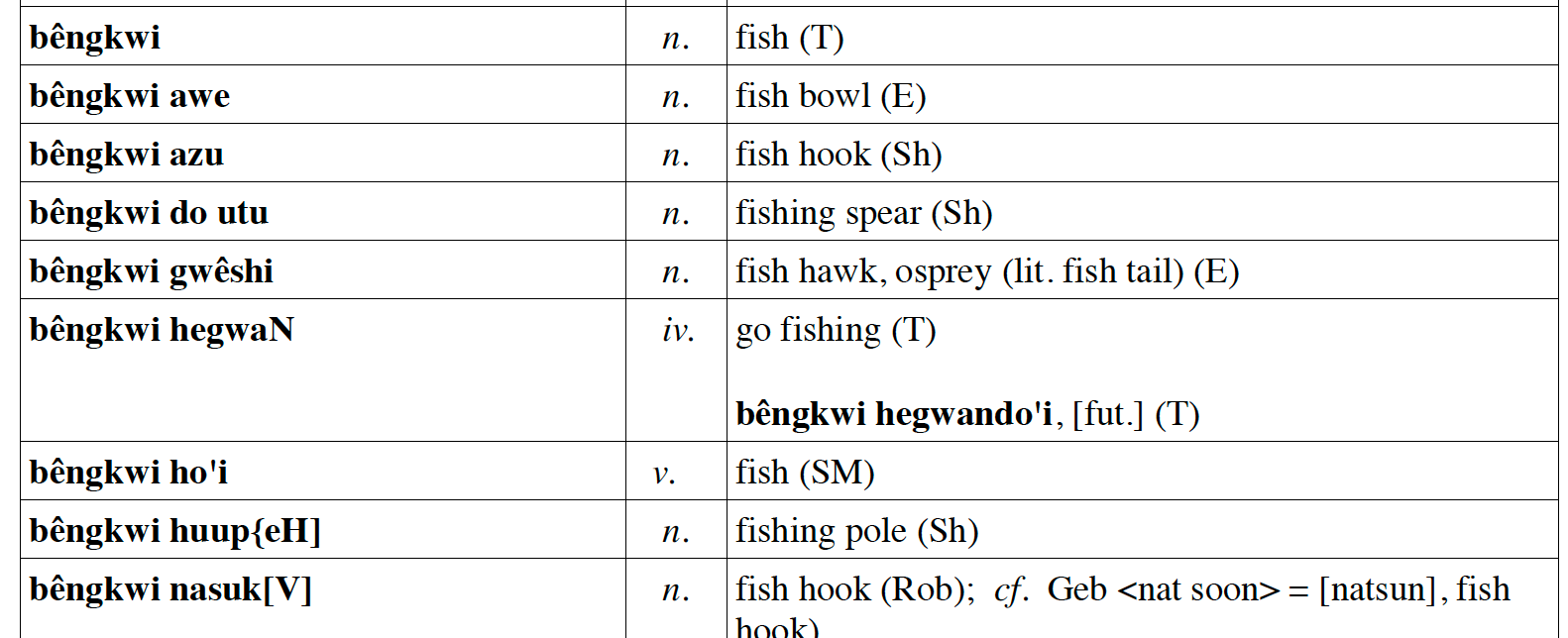"Fisherman Croc's desert song"?
« previous post | next post »
Shannon McDonagh, "'What the Hell Is This?': Crocodile-Like Fossil Rewrites Triassic History", Newsweek 7/11/2024:
The groundbreaking discovery of the Benggwigwishingasuchus eremicarminis reveals the presence of waterside crocodile-like creatures around the globe during the Middle Triassic.
Broadly known as pseudosuchian archosaurs—four-legged, carnivorous beings with an armadillo-like coating—these creatures are now known to have existed coastally between 247.2 million and 237 million years ago.
This proposed revision to Triassic history didn't startle me, due to my lack of relevant background assumptions about the distribution of crocodile-like creatures during that period. But the species name Benggwigwishingasuchus eremicarminis did catch my attention.
The paper announcing the discovery helps a bit — Nathan Smith et al., "A new pseudosuchian from the Favret Formation of Nevada reveals that archosauriforms occupied coastal regions globally during the Middle Triassic", Biology Letters 7/10/2024:
Abstract: Recent studies suggest that both stem- and crown-group Archosauria encompassed high ecological diversity during their initial Triassic radiation. We describe a new pseudosuchian archosaur, Benggwigwishingasuchus eremicarminis gen. et sp. nov., from the Anisian (Middle Triassic) Fossil Hill Member of the Favret Formation (Nevada, USA), a pelagic setting in the eastern Panthalassan Ocean characterized by the presence of abundant ammonoids and large-bodied ichthyosaurs.
[…]
Etymology: The generic name combines ‘Benggwi Gwishinga’ from the Shoshone term for ‘catching fish’, with ‘suchus’, the Greek term for Sobek, the Egyptian crocodile-headed god. The specific epithet combines the Latin ‘erema’ and ‘carminis’, meaning ‘desert song’, and honours Elaine Kramer and Monica Shaffer, and their love of the palaeontology, museums, and opera of the southwestern USA. The binomen is intended to translate roughly as ‘Fisherman Croc's desert song’.
That reveals some of the morphological analysis, though not the Shoshone morphosyntactic details, nor the appropriate pronunciation for the phrasal borrowing into English,
The Shoshoni dictionary at the Shoshoni Language Project lists both benggwi and gwishinga as meaning "fish", in the Duckwater Shoshone language:
I'm guessing that the first of those words means "fish" as a noun, and the other means "catch (fish)" verb.
The source "Harbin 1988" is cited in the references as "Harbin, Theresa, Annette George, and Ricky Mike. 1988. The Duckwater Shoshone language and Culture Curriculum. The Duckwater Shoshone Bilingual Curriculum Development Team". I haven't been able to find a copy of that material, but an Eastern Shoshone Working Dictionary confirms my guess (even though the Duckwater Shoshone tribe is identified as a Western Shoshone group), giving bêngkwi glossed as "fish" and gwêshi glossed as "entangle", with a derived form gwêshigkeN glossed as "trap, catch, ensnare, net, entangle":
There's a final non-linguistic mystery in the etymology of Benggwigwishingasuchus eremicarminis, namely the identity of the two people given credit for the "desert song" part of the name:
The specific epithet combines the Latin ‘erema’ and ‘carminis’, meaning ‘desert song’, and honours Elaine Kramer and Monica Shaffer, and their love of the palaeontology, museums, and opera of the southwestern USA.
They're not among the paper's authors ("Nathan D. Smith, Nicole Klein, P. Martin Sander and Lars Schmitz"). Nor are they mentioned in the paper's acknowledgements.
An interesting note: the paper contains a brief section denying AI assistance, presumably now required by the journal's editors:
I'll leave it to the commenters to explore the appropriate English pronunciations of Benggwigwishingasuchus eremicarminis — but you get a free subscription to LLOG if you can remember all 30-odd characters of the name, after a short period doing something else…





Rodger C said,
July 14, 2024 @ 10:09 am
There's never a Shoshone when you need one.
Sally Thomaon said,
July 14, 2024 @ 11:29 am
And that is why dictionaries should always have examples, preferably in sentences, so that users can get some idea of how the word is used.
But what a great scientific name this is!
Y said,
July 14, 2024 @ 1:45 pm
The specific epithet [eremicarminis] combines the Latin ‘erema’ and ‘carminis’, meaning ‘desert song’
That would be erēmus, gen. erēmī.
VVOV said,
July 14, 2024 @ 4:44 pm
The linked article says that the Natural History Museum of Los Angeles County provided some specimens used in the research.
A google search for Elaine Kramer and Monica Shaffer shows them listed as donors to that museum (https://nhmlac.org/join-and-give/our-donors).
So, my guess would be that they are being "honored" because their financial donations contributed to the research in some form, although in that case, it is odd that they are mentioned neither in the "Acknowledgements" section nor the "Funding" section.
Rick Rubenstein said,
July 15, 2024 @ 4:05 pm
It's clear what they're getting at with the "no AI-assisted technologies" bit, and I approve the sentiment, but as worded it's a preposterous assertion. At the very least it would imply the article was written without ever doing a Google search, a prospect which would make me a little nervous.
David Marjanović said,
July 17, 2024 @ 1:09 pm
Uh, carminis is the genitive of carmen. The whole thing is "desert song's"/"of a/the desert song", not "desert song". That's actually better than equating the beast with a "desert song", though.
How the name honors these two people is beyond me – did they sing in the desert? Usually if a species name is meant to honor people, it contains their names!
Does Google Scholar use AI, too?
Mark Liberman said,
July 18, 2024 @ 6:16 pm
@David Marjanović: "carminis is the genitive of carmen"
And erēmī is the genitive of erēmus, as Y observed. There are (supposed to be) three possibilities for the second part of a binomi(n)al name, which identifies the species within the genus: (1) a Latinate adjective agreeing in gender with the genus name; (2) a Latinate noun in the nominative case; or (3) a Latinate noun in the genitive case.
It's not clear to me whether "eremicarminis" is supposed to be a compound noun in the genitive case, or a recursive genitive of a genitive, or what…